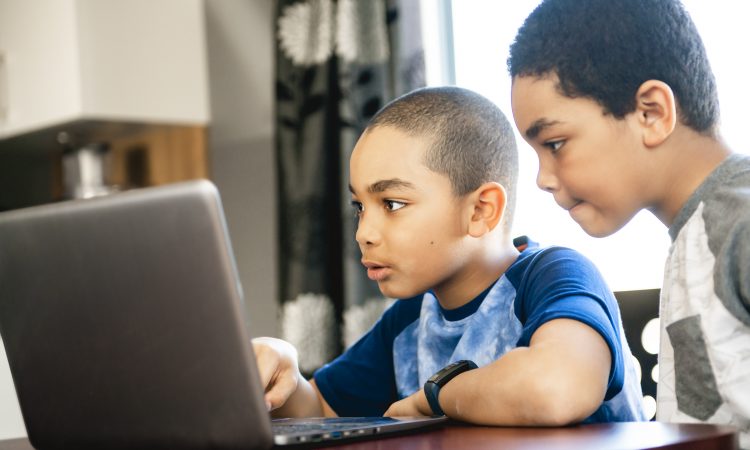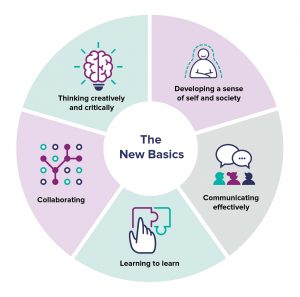With nearly 70% of students being affected by the COVID-19 crisis worldwide, education looks very different than it did at the beginning of 2020. In Canada alone, over 6.6 million students have been affected by the pandemic with the majority of those students moving to online learning until the end of the 2019-2020 school year.
While the pandemic has exposed and, in some cases, amplified existing inequities in Canada’s education systems, this period has also revealed new opportunities for innovation. Technology sits at this cusp of opportunity and challenge.
The application of technology in the learning process can be a catalyst in fostering students’ digital literacy, bringing together a myriad of future-ready skills including communication, creativity and critical thinking. However, technology can also contribute to inequity and student retention and readiness issues.
The challenges: Technology does not replace schools
Over the past three months, all of the provinces and territories across Canada have implemented a range of forms of online learning. The closure of physical school spaces and movement to learning-at-home environments has highlighted the potential role of schools as an equalizer among students; in particular, mitigating the impact of sociodemographic factors, building important relationships and providing an array of extra supports.
The pandemic has also exacerbated inequities that were always there – some connected to students’ varied access to technology, but many more connected to the impact of poverty, discrimination and the wide range in families’ capacity to support students (People for Education, 2020).
Lack of resources to support all students
On May 5th, People for Education released a report based on survey responses from over 1000 principals across Ontario called Technology in Schools: A tool and a strategy. The results from the survey revealed that now more than ever our schools need the infrastructure and technology to equip students with the skills to deal with current and future challenges.
While there is potential in online learning to support students in developing future-ready skills, results from the survey show that schools are not adequately resourced to deliver this type of learning. In Ontario, before the pandemic, only 6% of students per secondary school were earning credits through online learning. Even at this very low enrolment rate, principals reported challenges with e-learning including a lack of adequate supervision and support for students to help them manage their workload and course expectations (People for Education, 2020).
Back to ‘the basics’
In 2018, Andreas Schleicher, the Director for Education and Skills at the Organisation for Economic Co-operation and Development (OECD), cautioned: “Things that are easy to each and test have also become easy to digitize and automate.” During the pandemic, the urgency to move learning online has meant, in many provinces and territories, an emphasis on the easy-to-test-and-digitize “basics” – reading, writing and math. This narrow focus on the 3R’s fails to recognize the progress we have made toward understanding education at a more integrated and complex level.
People for Education has been tracking how Canada’s education systems have been responding to the COVID crisis and where their focuses have been (see “Canada-wide Education during COVID-19 Tracker”). In Alberta and Ontario, for example, literacy and math are the focus of the current learning from home strategies. However, jurisdictions such as British Columbia and the Northwest Territories have also included health and wellness and personal awareness as areas of focus.
The opportunities: Preparing students for tomorrow
Learning with and through technology are key skills that can prepare students for the inevitable changes technology is bringing to society and the labour market. RBC reported that in the next decade more than a quarter of jobs will be “heavily disrupted” by technology. Today’s students need to be equipped with skills and competencies today so they are ready for tomorrow.
 Future-ready skills
Future-ready skills
Future-ready skills and competencies are the foundation upon which other skills can be built, and are recognized as a component of quality education within the UN Sustainable Development Goals. The skills identified by People for Education as The New Basics include communicating effectively, collaborating and learning to learn; these are vital for student success in the future.
Technology can promote these foundational skills by being a tool to empower learning and develop innovation. Through technology, the walls of the school expand and students can collaborate across classrooms, schools or even countries. They can access expertise beyond the classroom teacher, and teachers can use online resources to personalize learning.
A reimagining of education
As most of Canada’s students complete the remainder of the school year online, a global conversation has emerged about how we can use the current crisis to reimagine the future for our school systems.
We have an opportunity to re-examine what’s being taught and to integrate skills such as digital literacy across curriculum. These skills will be relevant for students far into the future. This is an opportunity for policymakers to use the knowledge gained during the pandemic to help shape future policy around technology and opportunities for online learning.
What can we expect in the fall?
In Canada, British Columbia, Quebec and Prince Edward Island are the only provinces to have reopened schools to some students. All other provinces and territories have closed schools until at least September.
Some provinces, such as Ontario, have released possible strategies for returning to school in the fall. Ontario’s Framework for Continued Learning outlines a number of considerations for the school return, with technology as a key component in a blend of in-person and online learning.
As stated in People for Education’s latest report, technology can be a ground-breaking tool in education, but to be effective, it must be accompanied by an informed, coherent and comprehensive strategy. That strategy can include a reimagining of what is being taught by including future-ready skills, as well as mechanisms for ensuring all students have access to the opportunities that technology brings by having adequate resources, time in the curriculum and staff support in schools.
References
American Library Association. (2013). Digital Literacy, Libraries, and Public Policy. Retrieved from https://www.atalm.org/sites/default/files/Digital%20Literacy,%20Libraries,%20and%20Public%20Policy.pdf
People for Education. (2020). Technology in schools: A tool and a strategy. Retrieved from https://peopleforeducation.ca/wp-content/uploads/2020/05/Technology-In-Schools-Final-May-5.pdf




 Future-ready skills
Future-ready skills 
